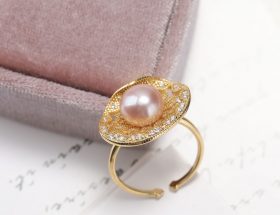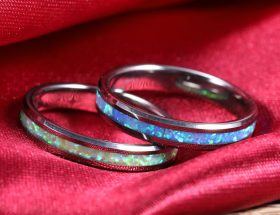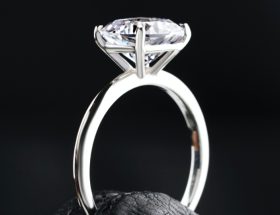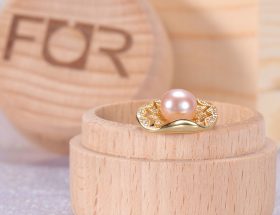Introduction to 925 in Jewelry
The realm of jewelry is adorned with symbols, numbers, and hallmarks, each telling a unique info. Among these, the ‘925’ stamp stands out, often raising eyebrows and piquing curiosity. This hallmark, predominantly found on silver jewelry, is a testament to the piece’s quality and purity. But what’s the story behind it?
Historical Background of the 925 Stamp
The practice of checking silver goes back hundreds of years, with different societies taking on novel images to indicate immaculateness. The ‘925’ hallmark arose as a generally perceived marker, meaning that the gems contains 92.5% unadulterated silver, with the excess 7.5% involving different metals, ordinarily copper. While 925 regularly signifies silver, you could sporadically track down it on gold gems. In such cases, it addresses gold-plated 925 silver, where a gold layer is fastened to a real silver base. This sort of adornments is many times named gold vermeil. Moreover, 925 palladium comprises of 925 silver with 3% palladium, improving the silver’s toughness and sheen. On the other hand, 925 platinum contains 92.5% unadulterated platinum.

The Science Behind 925: Sterling Silver Explained
Unadulterated silver, lovely, is delicate and pliable. To improve its sturdiness for ordinary wear, silver is alloyed with different metals, bringing about authentic silver. The ‘925’ trademark guarantees purchasers that they’re putting resources into a great compound that weds the magnificence of unadulterated silver with the strength of added metals.
Benefits of 925 Sterling Silver Jewelry
Durability: Sterling silver’s robustness ensures it withstands the test of time.
Hypoallergenic: It’s less likely to cause allergic reactions, making it suitable for sensitive skin.
Lustrous Beauty: Its unmatched shine makes it a favorite among jewelry enthusiasts.
Affordability: While exuding luxury, it remains more pocket-friendly than gold or platinum.
Versatility: Its adaptability allows for a plethora of designs, from minimalist to ornate.
How to Identify Genuine 925 Sterling Silver
While the ‘925’ stamp is a primary indicator, other methods can further verify authenticity. These include the magnet test (real sterling silver isn’t magnetic), checking for other official hallmarks, and using specialized silver testing solutions.

Caring for Your 925 Sterling Silver Jewelry
Maintaining the luster of your sterling silver requires you to keep it cleaned regularly. The most common way to do this is to mix mild soap and water and wipe with a soft cloth, which will work well. For deep cleaning, use a specialized silver cleaner (chemical resistant). Storing your sterling silver jewelry properly in a cool, dry place will also prolong its luster. To prevent tarnishing, it is vital to store your sterling silver jewelry in an airtight bag out of direct sunlight and moisture.
Why Would 925 Appear on Gold?
Finding a ‘925’ stamp on a piece of gold jewelry can be perplexing. Here are some reasons why this might occur:
Gold Plated Sterling Silver: The piece could be made of sterling silver but coated with a thin layer of gold. This is often referred to as gold vermeil or gold-plated silver.
Mislabeling or Misrepresentation: Unscrupulous sellers might use the ‘925’ stamp to mislead buyers into thinking they’re purchasing gold when it’s primarily silver.
Bimetallic Jewelry: Some jewelry pieces combine both silver and gold in their design. The ‘925’ stamp indicates the silver component’s purity.
How to Determine the Authenticity of Your Gold Jewelry
If you come across a piece stamped with ‘925’ but sold as gold, here are some steps to verify its authenticity:
Magnet Test: Genuine gold is not magnetic. If your jewelry is attracted to a magnet, it’s likely not pure gold.
Acid Test: This involves using a solution to test the metal’s reaction. Genuine gold won’t be affected, while other metals will show discoloration.
Professional Appraisal: Consider getting your jewelry appraised by a reputable jeweler to determine its true composition and value.
Understanding Gold Purity: Karats vs. 925
Gold purity is typically measured in karats, with 24 karats being pure gold. Common gold purities include 10k (41.7% gold), 14k (58.3% gold), 18k (75% gold), and 22k (91.7% gold). The ‘925’ stamp doesn’t fit into this karat system, further emphasizing its association with silver rather than gold.

Interpreting Other Numeric Hallmarks
Past the natural 925, jewelry frequently includes other numeric trademarks. For example, a 825 stamp demonstrates 82.5% immaculateness, meaning 19K for gold. Likewise, a 916 trademark indicates 91.6% immaculateness or 22K gold. Here is a speedy reference for gold karatages and their relating rates:
24K: 99.9% or 999
18K: 75% or 750
14K: 58.5% or 585
12K: 50% or 500
10K: 41.7% or 417
Ring Specifications and Gemstone Details
Apart from purity indicators, rings might also display size numbers like 6, 7, or 8. Rings adorned with precious gemstones might have hallmarks denoting the gemstone’s weight in carats. For instance, a ring with a 0.75-carat gem might be marked as “0.75” or “.75.”
Decoding Letter Hallmarks
While numbers are prevalent, jewelry also features letter hallmarks. These letters can signify various details, from the metal type to the jewelry’s creator.

Metal Type Indicators
Certain letter hallmarks correspond to specific metals:
P or KP: Plumb Gold
PLAT or PT: Platinum
S.S. or Steel: Stainless Steel
Silver or S. Silver: Sterling Silver
Pd or Pall: Palladium
Gold Jewelry’s Letter Markings
Gold jewelry has its unique set of letter hallmarks. For instance:
GF or G.F.: Gold-Filled
GP or G.P.: Gold-Plated
V20: Rolled Gold
V or HGE: Gold Vermeil
Maker’s and Sponsor’s Marks
Some hallmarks indicate the jewelry’s creator or the manufacturer. For instance, “T & CO.” represents Tiffany & Co.

Common Questions About 925 Sterling Silver
Why is sterling silver marked with 925?
The ‘925’ hallmark indicates that the jewelry contains 92.5% pure silver, with the remaining 7.5% being other metals, typically copper.
Does 925 sterling silver tarnish?
While sterling silver is more tarnish-resistant than pure silver, it can discolor when exposed to certain elements. Regular cleaning can help maintain its shine.
How can I clean my 925 sterling silver jewelry?
A mixture of mild soap and water, along with a soft cloth, can effectively clean sterling silver. For deeper cleans, specialized silver cleaners are recommended.
Is 925 sterling silver hypoallergenic?
Yes, sterling silver is less likely to cause allergic reactions, making it suitable for those with sensitive skin.
How can I tell if my jewelry is genuine 925 sterling silver?
Apart from the ‘925’ stamp, other methods like the magnet test and checking for other hallmarks can help verify authenticity.
Why is sterling silver more popular than pure silver for jewelry?
Sterling silver’s enhanced durability, combined with its lustrous beauty, makes it more suitable for everyday jewelry compared to softer pure silver.

Conclusion
Jewelry hallmarks, often referred to as purity or quality marks, primarily indicate the type and purity of the metal. These marks are crucial for verifying the authenticity of jewelry, especially high-value jewelry. Typically, you’ll find these marks on precious metals such as gold, platinum, silver and palladium. But they can also provide insights about the creator of the jewelry, its certification, and its country of origin. Whether you’re a seasoned collector or a casual buyer, understanding the significance of the “925” mark can enhance your knowledge of this metal.









